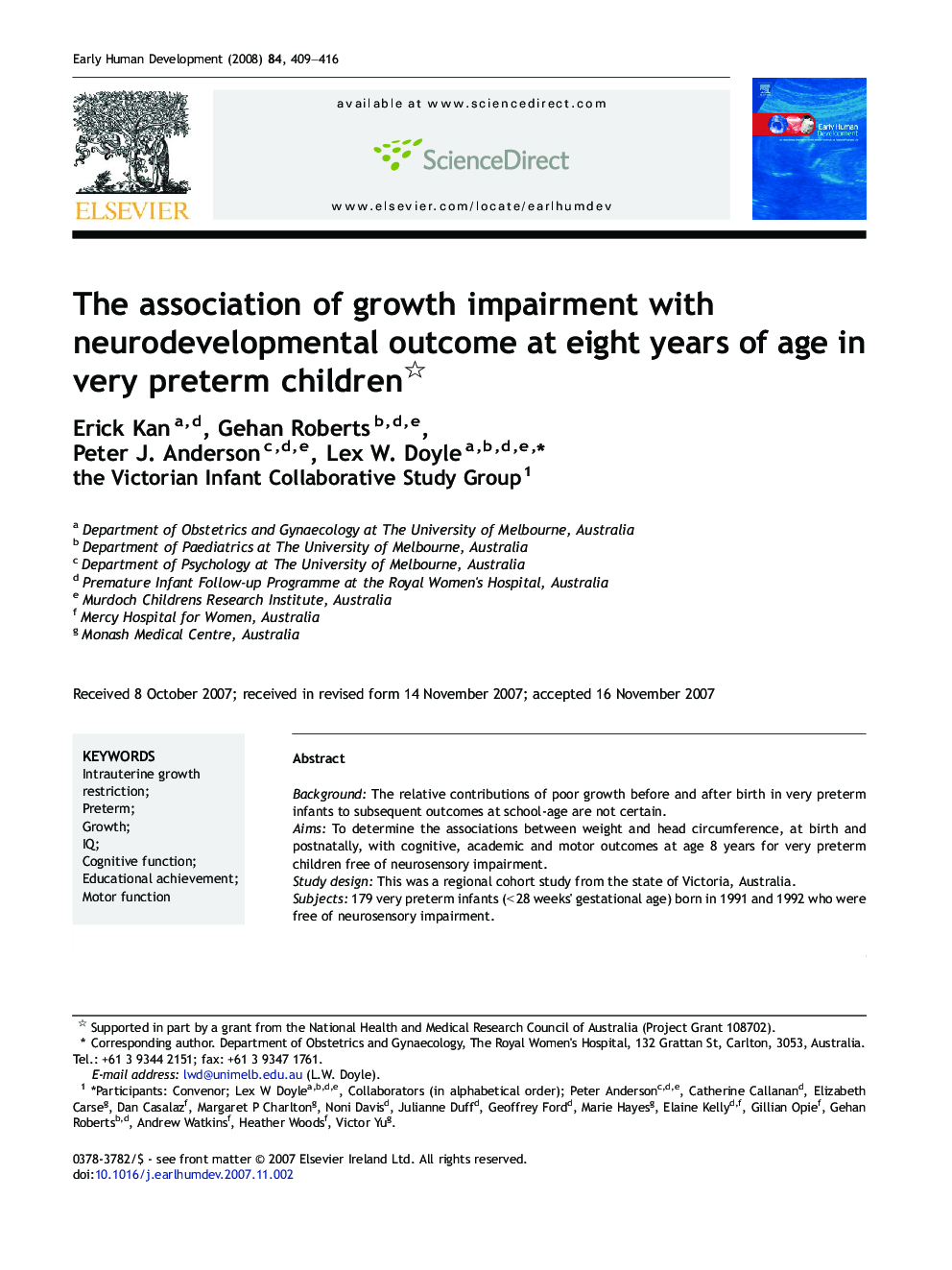| Article ID | Journal | Published Year | Pages | File Type |
|---|---|---|---|---|
| 3918211 | Early Human Development | 2008 | 8 Pages |
BackgroundThe relative contributions of poor growth before and after birth in very preterm infants to subsequent outcomes at school-age are not certain.AimsTo determine the associations between weight and head circumference, at birth and postnatally, with cognitive, academic and motor outcomes at age 8 years for very preterm children free of neurosensory impairment.Study designThis was a regional cohort study from the state of Victoria, Australia.Subjects179 very preterm infants (< 28 weeks' gestational age) born in 1991 and 1992 who were free of neurosensory impairment.Outcome measuresAt 8 years of age children had cognitive, academic and motor assessments. Weight and head circumference data were collected at birth, at the time of discharge (weight only), at 2 years of age and at 8 years of age, and growth restriction was calculated using Z-scores (standard deviation scores) relative to the expected mean for age.ResultsVery preterm children were significantly lighter and had smaller head circumferences than the reference group at all ages. Weight at any age was mostly unrelated to any outcomes. While head circumference at birth was not related to school-aged outcomes, smaller head circumferences at ages 2 and 8 years were associated with poorer performance in most outcome measures. Catch-up growth in weight in early childhood was not associated with 8-year outcomes.ConclusionsIntrauterine growth restriction was not substantially associated with neurodevelopmental status at age 8. Weight after birth had little influence, but head circumference became more important in early childhood.
